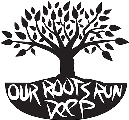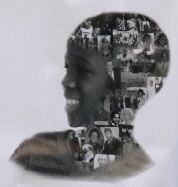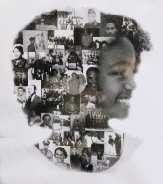Sherman Greene Remembers
By Harry Enoch and Jane Burnam
Jane and I recently had the opportunity to visit one of Winchester’s elder statesmen, Mr. Sherman Greene. We had heard Sherman reminisce about early times several years ago and wanted to record an interview with him. (This is the first in the Winchester Black Oral History Project.) We were treated to stories for three and a half hours and left feeling like we’d just begun.
Sherman is now 91 years young, sharp as a tack and physically fit. He told us he has records of his family going back to a great-great-grandmother, Mollie Greene, who was owned by John Greene of Montgomery County. Her son, Bryant Greene, enlisted in the Army at Camp Nelson during the Civil War and served in Company A, Sixth U.S. Colored Cavalry. He later received a military pension for his service. Bryant died at the age of 95 and was buried in North Middletown.
Sherman was born on Second Street in Winchester to Willie Roy Greene Jr. and Margaret Hall. When ten months old, he lost his mother. About that time the stock market crash brought on the Great Depression. Sherman, his brother and two sisters went to live with relatives for a time.
Sherman stayed with his grandparents on Sixth Street at first then moved with them to the Clay Farm on Paris Road when he was about five years old. He remembers riding out in a truck loaded with their furniture. Grandfather Greene, who was overseer of the farm, milked 19 cows twice a day. Sherman and his cousin carried milk pails to the house, balanced on tobacco sticks. His grandfather also kept ten beehives and taught Sherman how to capture a swarm of bees—“You get a pan and beat on it with a big spoon until the bees calm and settle on a limb.”
When it came time to start school, he stayed with friends in Winchester until his father was able to buy a house on Meadow Street. Sherman’s first memorable educator at Oliver Street School was his 1st grade teacher Miss Missouri Quisenberry (later Bluster), who had taught his uncle and later taught his daughters. His most outstanding teacher was Mrs. Mildred Henderson, who taught English literature and inspired his love of poetry.
Sherman recalled that after the ice storm and flood of 1937, Winchester took in refugees from Covington and Newport. A soup kitchen was set up at the corner of Burns Avenue and Washington Street, near where Walter Newell had a cabinet shop. “I remember the storm made me miss my first day of school in three years.”
Living on Meadow Street near Harmon Field, Sherman was there when barnstorming teams from the Negro Leagues came to town. He got to see the Louisville Zulu Giants and Indianapolis Clowns and recalls players Satchel Paige and Stonewall Jackson.
“We didn’t have a swimming pool in Winchester, so we had to come over to the Douglas Park pool.” They would ride the train to Lexington in the morning, use their spending money to buy snacks then return home the same way. Since the train didn’t leave until 9:30 p.m., they’d often visit with Mrs. Mayme Grimsley to get something to eat. She was his music teacher at Oliver (she commuted there from Lexington). “Her favorites were Marion Anderson and Rex Teagarden.” Mrs. Grimsley also taught multiple generations, including Sherman’s daughter, Juanita, whom she always called “Sherman.”
Sherman took a variety of jobs to earn pocket money, starting while he was still in school. One of these was with Garfield Bell, who had a blacksmith shop near Oliver School. When King Ranch came to Kentucky—buying part of Idle Hour Farm on Old Frankfort Pike—they sent upwards of 200 horses to Winchester for Bell to shoe. Sherman walked over to work with him after school. His job was to keep the bellows going and hold the horses while Mr. Bell did the shoeing. He once had a horse that would not settle down. Bell tried his hand and he couldn’t settle the horse either, so Bell slugged him. The horse went down and when he got up, he stood very still.
Sherman said he worked at every drugstore in town, all on Main Street: Shea’s Drugstore; the St. George Hotel; McGuire’s and Corner Drug. “I got the job at George’s Drugstore after Frank “Mutt” Frazier went into the service. He became a doctor and his brother George was later the principal at Oliver. I was the short-order cook and made ice cream.” Doctor Shea closed on Wednesday afternoons and often took Sherman and John “Goo Goo” Jordan out to his farm for target practice with .22 rifles.
Do you know what we used for targets?”
“No.”
“Dimes!”
“Did you ever hit any?”
“Sometimes.”
At the George’s Drug Store Sherman worked for Leslie Duff. He went there before school and shaved 50 pounds of ice with a tool that looked like a frog gig. Then he’d go back after school to shave another 50 pounds. He also had to bag up bluestone and lime and bottle muriatic acid and ammonia. He took a bit of ammonia to school once to introduce his friends to “smelling salts,” which did not go over too well.
Sherman said he was allowed to take one pack of cigarettes a day and would save them till he filled a carton of ten. Then he’d take those around to George Boone’s pool room on Washington Street and sell them. “At Boone’s you could walk through a door to the restaurant, so you could have yourself a sandwich while you shot pool.”
At George’s drugstore “I made ice cream too.” As the mixture ran out of the machine, he ran it into quarts and half-gallon containers. “Some people who came in called for ‘hand packed’ quarts which had a little more ice cream but took more work. And cost more too.”
Another of Sherman’s tasks was to prepare a rum concoction that was hugely popular at Christmas-time. He described a mixture of rum-flavored fruit and raisins that was added to ice cream, along with a tad of bourbon. He procured the bourbon at the liquor store next door.
“Since they knew me from the drugstore, I could go to the dispensary and get liquor for people who couldn’t buy it themselves.”
How old were you then?”
“About fourteen or fifteen. They weren’t as strict back then.”
Sherman Greene Remembers, Part 2
By Harry Enoch and Jane Burnam
During World War II, “I was in high school—just marking time until I could go into service.” Sherman’s dad had served in the Argonne Forest during World War I, and his brother was then serving in the 92nd Infantry. When Sherman finally got his wish, the war had ended. In December 1945, at age 16, he enlisted in the Army Corps of Engineers for a three-year hitch. He recalled going to Camp Atterbury near Indianapolis with a brand new pair of shoes.
“We had to walk around in deep snow. I dried my shoes at the stove one night and the soles turned to crust.”
From there they sent him first to Fort Lewis, Washington, for basic training. He then went to Camp Kilmer, New Jersey, for three months, expecting to go overseas, “But an order came down that no more colored troops would be sent to Europe.”
He went next to nearby Fort Dix then to Fort Benning, Georgia. “I was working as a lineman. The MP’s were hard on blacks in camp, but the police in town were really bad. I ended up there once—took the wrong bus.”
Still on the move, he went to Camp Stoneman, California, where he shipped out on the USS Sea Devil, a converted cargo ship carrying 1,500 troops. After 28 days at sea, they landed in Manila during the postwar occupation. There they guarded prisoners.
Once, when he tried speaking Filipino (Tagalog) to a native, the man answered, “Don’t you speak English?”
Sherman was with the 97th Combat Engineer Unit, an all-black regiment. His next assignment was to Guam with the 1315th Combat Engineers. They built Quonset huts and a PX. From there he went home on emergency leave to visit his sister who terminally ill.
Back in California, Sherman served in the 1900th Station Compliment. While unloading pillows, he got a strain and had to undergo hernia surgery. He finished his service in Oakland with graves registration. While there he played football with the Oakland Air Base Knights and had the opportunity to go against Joe Perry’s old team at Treasure Island Naval Station. Perry had gone on to a career with the San Francisco 49ers and became one of the NFL’s first black stars.
Sherman mustered out of the service after 2 years, 11 months and 28 days. He had planned to make a 20-year career, but the Army wasn’t interested in keeping blacks in the then segregated military.
Back in Winchester, Sherman pondered his future.
“I was thinking of barbering, but a friend of mine recommended shoe repair instead. He was a barber.”
Sherman enrolled in shoe repair at the West Kentucky Vocational School in Paducah. In late 1949, with a flood closing in on the campus, Sherman came back home and couldn’t return in time to take his final exam.
“Fortunately, President Timberlake was good friends with the principal at Oliver School, George Adams, who could give me the test. The day I went in, Professor Adams was out of the office. I met the student he left in charge, a Miss Chambers, who later became my wife.
“I remember our best date ever. It was a Thanksgiving dance, 1949, at Joyland on Oliver Street. The band was late but it was 60 degrees and everybody had a good time. The next day came the deepest snow we ever saw. Ann and I were married on December 22, 1951.” Ann and Sherman have three daughters: Janice, Juanita and Natalie.
Sherman worked at shoe shops in Winchester, including Gay Berryman’s on Broadway and Walter Shurig’s on Main. After Shurig, a man named Suder ran the shop. “Told a lot of ethnic jokes. Didn’t like him.”
After taking off work one Saturday—their busiest day—to attend his grandmother’s funeral, Suder told him if he missed another he’d be fired. It wasn’t long before Sherman decided to attend a Cincinnati Reds ballgame on a Saturday.
“We went up in a ‘may-make-it’ car with ‘may-pop’ tires. Didn’t make it back. Got home late Sunday night or early Monday. I never went back to the shop.”
Sherman said the shoe repair business was dying out. “Thom McAn shoes came along. They had neoprene soles that outlasted leather.”
Jobs opened at the Army Depot at Avon. Sherman applied for a warehouse position and was hired as a laborer. During his 30 years at “Avon,” he worked many positions, including heavy-equipment operator and tractor-trailer driver for the Commissary. He also worked a few years at the Bluegrass Army Depot in Richmond.
During his spare time, he coached a Pony League team in Winchester. He remembered in 1959, when it was his turn to coach in the All Star game, “Couldn’t make it. I had a heart attack.”
In 1958 he was master of the Mosaic Lodge #25 of the Free & Accepted Masons when they laid the cornerstone for Broadway Christian Church.
Sherman and his family were living in a house on Maple Street, when the area was cleared for the new underpass for the Expressway. They moved to Lexington. He’s been there since 1964, but still stays in touch with friends and activities in Winchester.
Before we left, he shared one more story. “I did some bartending and worked parties in Lexington. At a Kathy Gentry party, I heard they were going to film a movie, “The Dreamer,” in Lexington with Kurt Russell and Dakota Fanning. I put my name in for an extra and I got it. They filmed at the Carnahan House. I’m in two scenes.
“I was in Seabiscuit too. In a bunch of scenes in that one. But they all ended up on the cutting room floor.”
Sadly, we could tell only a few of Sherman’s many stories here. Check out the audio interview on our Oral History page.
WINCHESTER BLACK HISTORY
AND HERITAGE COMMITTEE


© 2019-2024, ALL RIGHTS RESERVED,
Winchester Black History and Heritage Committee
Website Designed and managed by Graphic Enterprises

